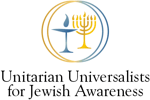Mussar Study Group – 3rd Sunday of each month 4 pm EST / 1 pm PST To register: click here
Passover Shabbat – Friday, April 26th at 8 pm EST / 5 pm PST
Revs. Ruth Rinehart & Marti Keller, co-leaders. To register: click here
June Shabbat Service – Judaism’s Tikkun Olam – “repairing the world” – Friday, June 28th – 8 pm ET / 7 pm CT / 6 pm MTN / 5 pm PT via Zoom. To register: click here
High Holy Days Shabbat – Friday, October 4th at 8 pm EST / 5 pm PST
Rev. Jay Wolin, speaker To register: click here
All events via Zoom unless noted differently. Registration links will be updated as available.



0 CommentsComment on Facebook